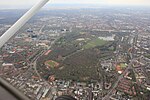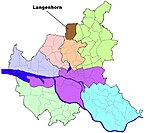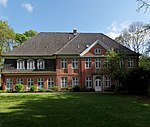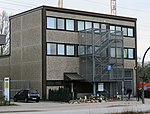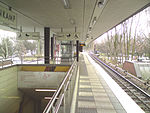Hamburg Airport

Hamburg Airport (IATA: HAM, ICAO: EDDH), known in German as Flughafen Hamburg, is a major international airport in Hamburg, the second-largest city in Germany. Since November 2016 the airport has been christened after the former German chancellor Helmut Schmidt. It is located 8.5 km (5.3 mi) north of the city centre in the Fuhlsbüttel quarter and serves as a hub for Eurowings and focus city for Condor. It was formerly named Hamburg-Fuhlsbüttel Airport, a name still sometimes used. Hamburg Airport is the fifth-busiest of Germany's commercial airports measured by the number of passengers and counted 17,231,687 passengers and 156,388 aircraft movements in 2018. As of July 2017, it featured flights to more than 130 mostly European metropolitan and leisure destinations as well as two long-haul routes to Dubai and Tehran. The airport is equipped to handle wide-bodied aircraft including the Airbus A380.Hamburg's other airport, Hamburg Finkenwerder Airport where the Airbus factory is located, is not open to commercial traffic.
Excerpt from the Wikipedia article Hamburg Airport (License: CC BY-SA 3.0, Authors, Images).Hamburg Airport
Oststraße, Hamburg Fuhlsbüttel (Hamburg-Nord)
Geographical coordinates (GPS) Address Nearby Places Show on map
Geographical coordinates (GPS)
| Latitude | Longitude |
|---|---|
| N 53.630277777778 ° | E 9.9911111111111 ° |
Address
Apron 2
Oststraße
22335 Hamburg, Fuhlsbüttel (Hamburg-Nord)
Germany
Open on Google Maps
